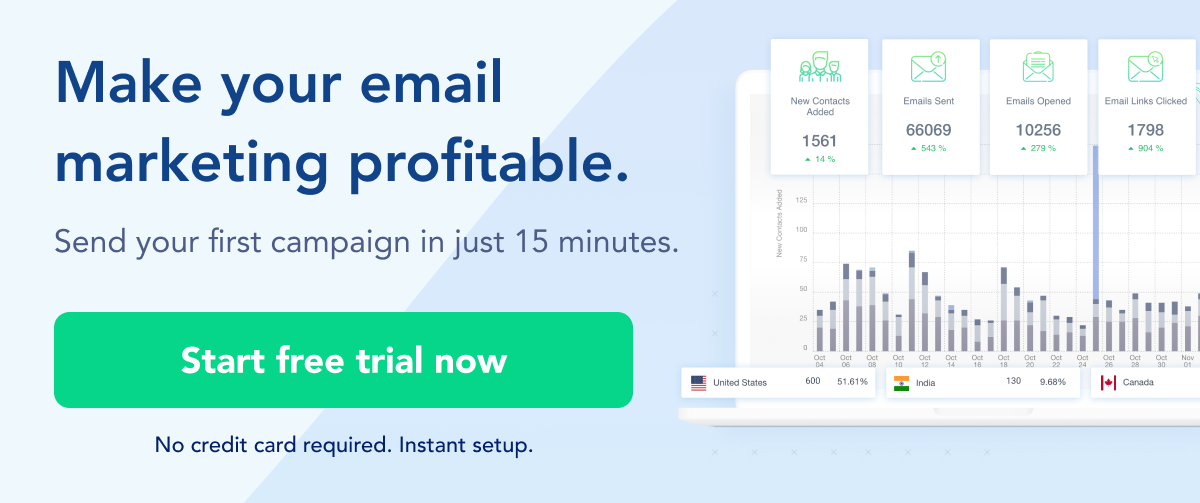
Email List Management Best Practices to Double Your Open Rates
The best practices mentioned in this post are exclusively meant for folks whose email list size is 100k or more.
In case your email list size is less than 100k, I don't think these techniques will apply for you. We have written more suitable content for you, about emails going to spam and a guide to email deliverability and a small business marketing guide and a few email marketing resource, here.
Table of Contents
Introduction
Over the course of last few years, I have been helping our customers with their email marketing. Bunch of them have list size of 100k+. Some have seen as high as 2x more opens after moving to SendX and applying the techniques I am about to layout in this post. 2X more opens with a list size of 100k+ means a clear positive effect on your top line.
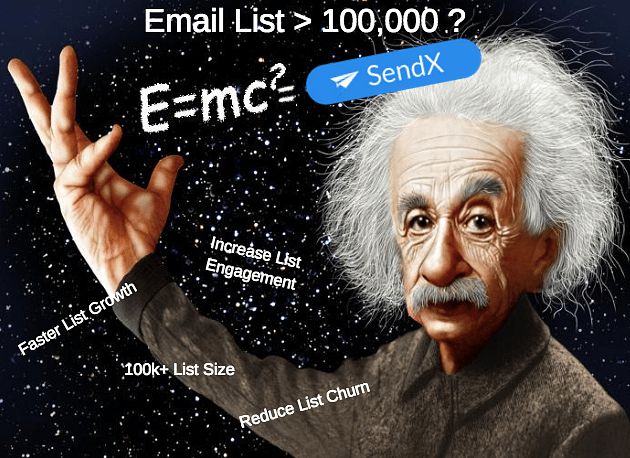
So, this post (which will take 10 min+ to read) will help you increase the top line of your company.
So, I strongly recommend you read all the way till the end.
We’ll cover some very powerful tactics which are neglected by 80% of the email marketers. Especially, section 1, point A (it’s a game changer).
First some basics. Once you are sure you have setup your email marketing tool properly, your email marketing strategy will come down to your ability to juggle the following three things effectively:
B). Low Email List Churn
C). Effective Email List Engagement
If you stop paying attention to anyone OR start paying too much attention to only one, then the ball will drop and your email marketing strategy will start falling apart.
The best email marketers in the world have figured this out and now with this guide, I am going to help you do just that.
I have seen way too many email marketers suffer from The Big List Syndrome.
Email list size is a vanity metric.
A big email list in itself will not help you grow your business until you are in the business of selling email lists itself (which is sincerely hope is not the case). You need enough folks to open the email and then engage with it. Regularly.
But, how do you achieve a healthy balance between the three?
Side Note - In case you want to benchmark your email opens (and other email marketing metrics) with others in your industry, take a look at this detailed study.
So, what is Email List Management?
Email List Management is a set of practices email marketers use to manage their email list. But, due to The Big List Syndrome, most marketers do not even think deeply about email list management. They confuse email list management with list growth and sending email campaigns.
This works ok when you have a smaller list size but as your list grows, you will see that your open rates begin to drop hence offsetting your list growth.
Here are ways to manage your email list once it has reached 100k+.
Here are two main practices to manage your 100k email list:
1). Clean your email list
2). Segment your email list
Let's discuss the above two practices in detail.
1). Clean your email list
Less can be more than enough.
Does this sound counter initiative? Excellent! You are about to learn something really important.
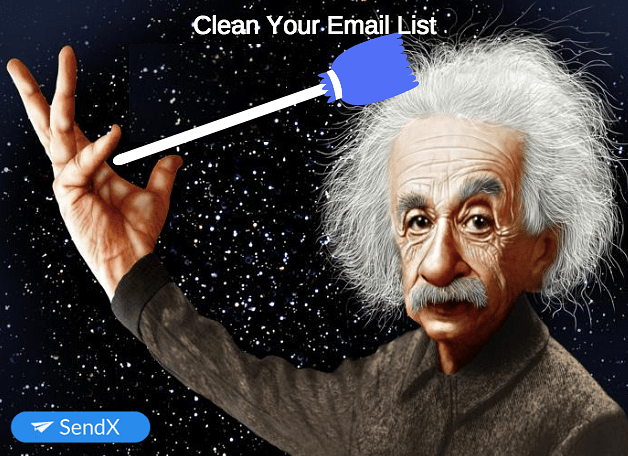
When was the last time you pruned your email list? If the answer is never, then you are wasting your time and money on folks who are never going to buy from you. But, "does that even matter? I am sending emails to everyone which includes the folks who are engaging and the guys who are not engaging might also engage in future... why should I take an extreme step of deleting them altogether?". Well, although this sounds logical in the email marketing world, it is not. Let me explain.
First, some data:
On an average an email list decays by around 22% every year.
This means, 22% of your email list will be useless in 1 year. If you have 100k subscribers today, then in 1 year that number will hover close to 78k.
This happens due to various factors like:
- Contacts change their email addresses as they move to a new company (especially true for B2B).
- Abandoned old email addresses (especially true with AOL, Yahoo Mail etc.)
- Unengaged subscribers opt out (unsubscribe), mark email spam OR block you altogether.
So, whatever you do, whoever you are, the 22% churn will happen.
That's not all by the way. This does not include unengaged subscribers who have not opened your email in the last 6 months. They are also dead weight.
What you should do with dead weight:
Get rid of it.
Here is why.
Why should you clean your email list?
There are 3 broad reasons:
A) It improves your overall email deliverability since a clean email list will have:
- Fewer bounces
- Fewer SPAM complaints
- Better open & click rates
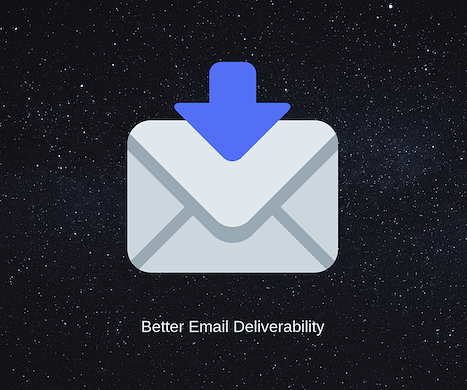
Since your email engagement affects your domain reputation, this will help improve the overall deliverability of your marketing emails.
Email engagement directly affects your email deliverability.
This simply means:
You will get much more unique opens on a smaller, more engaged list than a bigger email list that is bloated with dead weight.
Take for example:
Your unclean list size of 100k gets a 15% unique open rate. This amounts to 15k opens.
After segmenting this list down to say 3 lists the overall opens will be > 15k, giving you a much better open rate.
Less is more than enough for an email list.
Did you know as high as 8.9% email recipients might mark your email as SPAM if they are no longer engaging with it and only 39.7% of people will actually unsubscribe from the list?

B) It adds up to a faster and more efficient email marketing execution
A cleaner, more engaged list will lead to:
- Better and more accurate reporting
- Ability to run conclusive email marketing experiments
Both of these are critical if you have list size > 100k.
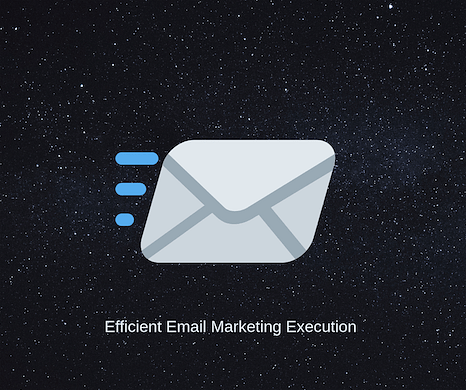
In an unclean email list, it will be harder to tell what is working and what is not. So, if you run a test on 100k email subscribers and if 50k are inactive, the data you get will be skewed and you won't be able to make any predictions with confidence.
You will never really understand what works best for your list.
C) Better ROI (reduced spending on email marketing software)
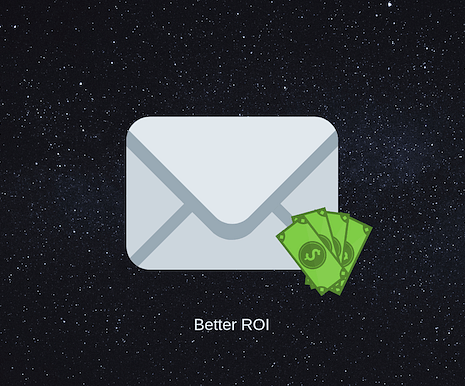
A leaner yet better performing email list costs lesser. Most email marketing software are priced based on your list size OR number of emails sent per month. In either case, this is the right choice.
Does the following line resonate more (as far as list size is concerned)?
Less can be more than enough
If not, drop your concerns in the comments section and we can talk more about it.
So how should you clean your email list?
First, you need to decide which contacts should get deleted. Here is a recipe to do that.
These are obvious candidates and any good email marketing software will automatically exclude these from your email list:
1). Bounced email addresses
2). Email addresses that have marked your email as SPAM
3). Unsubscribes
Now, comes the more difficult part of identifying unengaged subscribers that need to be pruned.
One of the two techniques work fairly well:
1). Delete subscriber based on time (last 'n' months)
This technique works fairly well in case you send very frequent emails to your subscribers. You have to be sure of the time frame which you select here.
I would recommend to be slightly conservative here (I will discuss the reasons in the segmentation section) and choose to say 3 or 6 months. If you send emails regularly and a contact has not even opened any of your emails for 6 months, they are adding to the dead weight. You should remove them entirely or separate them out to a different list (or segment).
2) Delete subscriber based on count (last 'n' campaigns)
This technique works fairly well in case you don't send frequent cart emails. In such cases, you should decide based on how many campaigns are too much for someone to not engage.
Any number from 15 - 25 will make sense here. If a user has not even opened any of your last 25 emails it is likely they will not open anything in future and they are adding to the dead weight. You should remove them entirely or separate them out to a different list (or segment).
Like all things mentioned here, SendX has a pretty simple way to do it using segments. Just create a segment and delete it using a bulk action.
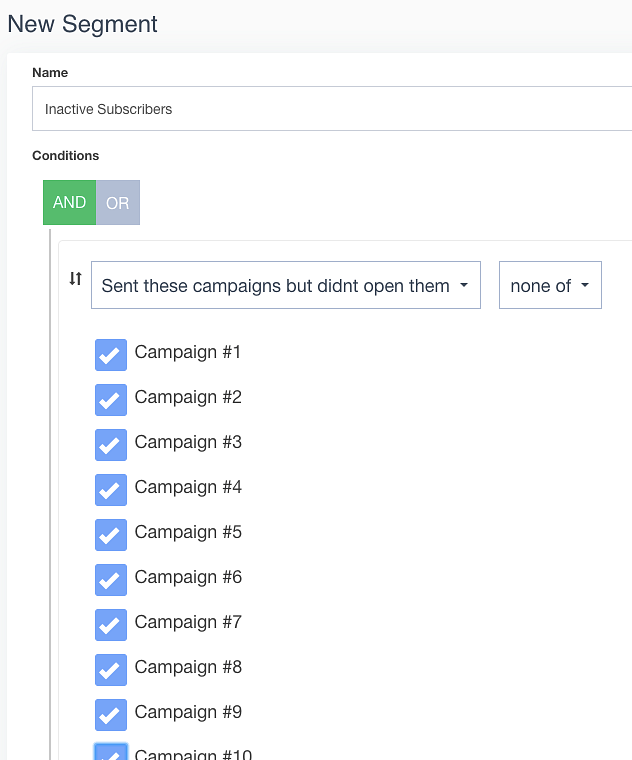

Apart from this, there are online services that help you with list cleaning and scrubbing. I would recommend to employ them in cases you are seeing unusually high bounce numbers (>5%) on your opt-in list.
These scrubbing services help you with:
- Validating your email list
- Removing fake email addresses
- Removing typos in email addresses
- Checking for emails from disposable email address providers
Some email scrubbing software/services to try include:
- MailBox Validator - has a free plan for checking 100 contacts
- Quick Email Verification, starting at $4 for 500 contacts.
- BriteVerify - A cent per email address, up to 250,000 verifications
- ListWise - Free trial with up to 100 email address checks
- Data Validation - Allows one free report before purchase
There are more interesting and sophisticated tactics for list cleaning which we will cover in the segments section.
3). Segment your email list
Segmentation essentially means splitting your email lists into various interest or behavior groups. This further allows you to treat these sub-lists (or segments) based on what resonates best with them. With the email marketing segmentation techniques, you are no longer relying on a spray and pray approach.
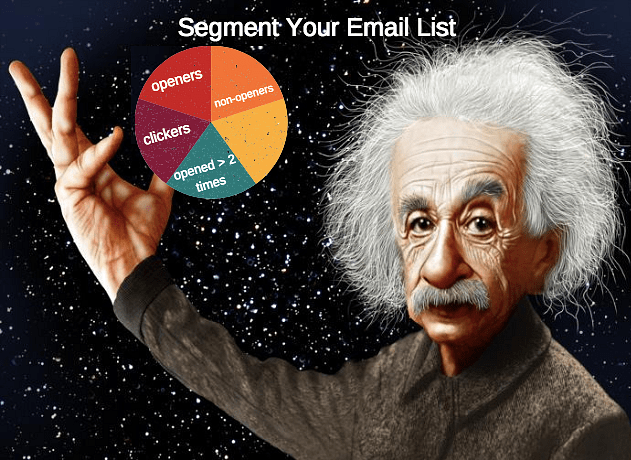
If your business emails serve a heterogeneous set of users who behave differently over email then you should be segmenting your email list. The phrase 'behave differently' is subjective and you would be the best judge of this.
Here are a few signs of that:
1). Different interest types
2). Different demographics
3). Different age groups
4). Different titles (B2B)
5). Different gender
6). Different email habits
The above is by no means an exhaustive list (its impossible to create one), so don't treat it like a checklist.

Before you go about segmenting your email list you should first remove the obvious candidates like bounces, email addresses that have marked your email as SPAM and unsubscribes.
So, why should go about segmenting your email list?
Why should you segment your 100k email list?
There are 3 broad reasons:
A). It improves your email engagement
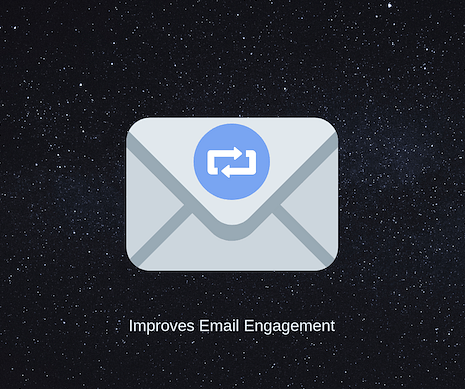
Email engagement is the most important metric for an email marketer and why email segmentation leads to that should be pretty obvious. A good segmentation strategy will lead:
Sending the right message, to the right user, at the right time.
When you do this, it will lead to more engagement since you are delivering more value to the subscriber.
B). It improves your email deliverability
A right segmentation strategy leads to improved email engagement. Better engagement improves email deliverability.
Email engagement directly affects your email deliverability.
This simply means:
You will get much higher open rates on the segmented list than on a big list which is not segmented.
Take for example:
Your unsegmented list size of 100k gets a 15% unique open rate. This amounts to 15k opens.
After segmenting this list down to say, 75k subscribers, you should get > 15k opens.
C). It adds up to a better email marketing execution
A segmented list leads to with more engaged will lead to:
- Better, accurate and more contextual reporting
- Ability to run better and more conclusive email marketing experiments
A big monolithic list is like a one size fits all approach. This does not leave any room for contextual insights which can then help you fine tune your email marketing. So, if you run a test on 100k email subscribers which are not segmented that data will pull you in all sorts of different directions.
You will never really understand what works best for a specific type of subscriber in your list.
How should you segment your email list?
Segmentation is only possible if you have relevant data about your subscribers. So, following their digital footprints and capturing them is the key.
Where do users leave relevant data about them (which you can tap into)?
- Web forms, email pop ups and landing pages
- Email activity (based on how they interact with your email like clicks, opens etc)
- Website activity & Purchase history
- Advertising platforms
Note - You can also buy the above data from 3rd party data vendors. We will ignore that since that strategy is not relevant from email marketing standpoint.
How do you go about tapping into each of those sources? In most of the cases, you don't even need to create segments based on all the above sources. But let's dive into each of them.
Web Forms and Landing Pages
This is the primary source of data for email marketers. Apart from using it to collecting email addresses, you should collect important data that is relevant to your business like company name, gender, age, interest etc.
SendX provides web forms, pop-ups, and landing pages to help you do just that. Alternatively, you might use an online form builder like Paperform.
Email Activity
Email activity data plays the most important role in segmentation. Data related to:
- Email Opens
- Link Clicks
- What type of links get clicked
- Email replies
SendX provides all these data points and they can also be used in the segment builder to create segments.
Website activity & Purchase history
What type of pages a subscriber is visiting on your website can help in determining what their interests are. Purchase history is a much more clear sign of what they are interested in. This is data is especially useful for business that has multiple categories or product types (like an eCommerce store).
You can use SendX JS SDK to collect all this data and then use them inside the segment builder.
Advertising platforms
If you are collecting leads and building your email list using advertising platforms like Facebook Ads then you will have a better understanding of their segments (since you might be running ads on pre-defined segments).
With all these methods you can have relevant data about your customers which can then be used to create segments.
Be sure to choose an email marketing software that has sophisticated segment creation capabilities.
Email list segmentation strategies
You would ideally want to segment users based on either their interest(s), funnel stage or email activity. They all serve an entirely different purpose. Let's understand them better:
1). List segmentation based on users' interests
This will depend on the type of your business. Broadly, this will either be based on the categories/services/products your business is serving.
If you are running an e-commerce store, then you don't want to send a footwear promotion campaign to someone who has only bought books from your site. Remember spray and pray is not a good strategy once your email list is big enough. It has a lot of side effects which we have already covered in detail.
A user's interest should ideally be captured right at the time he is getting subscribed to your list. This can be implicit based on the product/services he had bought, page (category) he subscribed from, Facebook audience type he is coming from OR you can explicitly ask him in the email subscribe form.
Once have captured a user's interest you can use those fields in a segment creator and create segments.
In SendX, you can store a user's interest (or category) in tags. This is how you can further segment your list using tags in SendX.
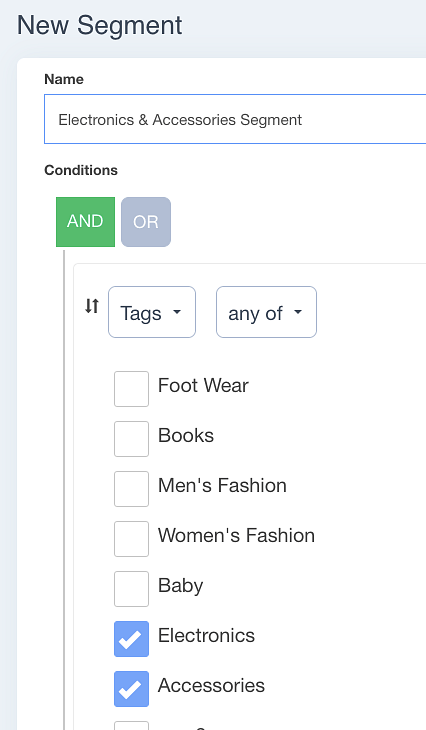
2). List Segmentation based on the user's stage in the marketing funnel
As you might be aware, a funnel is the set of steps a visitor needs to go through before they can reach the conversion.
This a how a marketing funnel looks like for a B2B company.
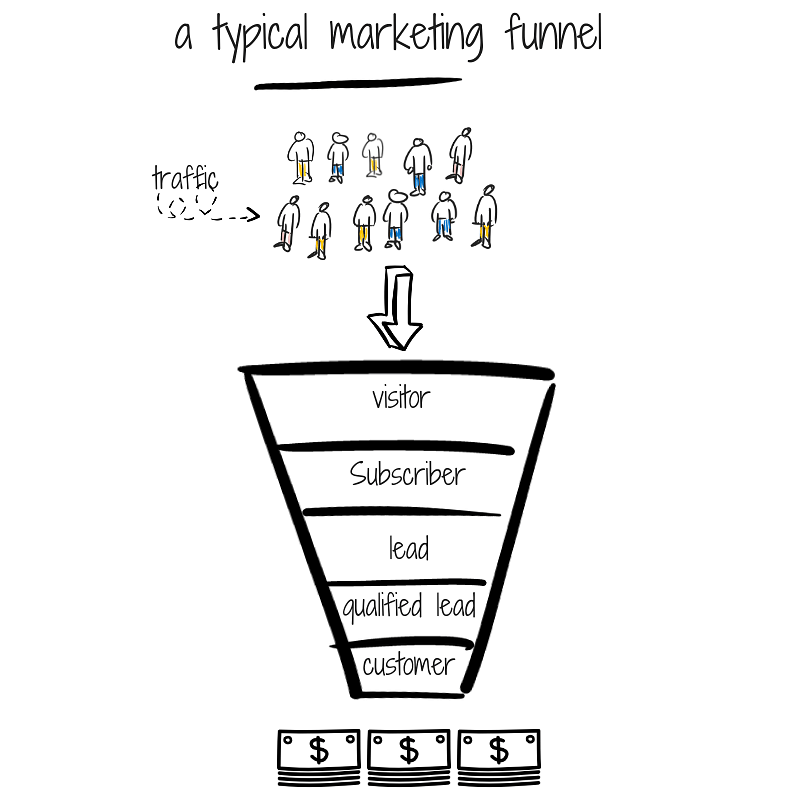
The terminologies can vary from business to business, but the core idea remains the same.
You want to employ an email marketing strategy that will always move the user further down the funnel.
The email marketing strategy you employ can vary significantly based on which stage the user is.
Sending a product update email to a lead might not be very useful for him. Similarly sending an offer email to a customer who has already bought that product might not be the best experience for him.
3). Email activity-based segmentation
Ideally,
Users who have a similar email engagement should be part of the same segment.
This ensures you can adjust your email marketing strategy based on this.
For users who are highly active, you can tune up your email frequency to an optimum volume.
For users who show a very poor engagement, you reduce email frequency by sending only a monthly digest email OR starting a re-engagement email sequence. There are a host of tactics to re-engage inactive subscribers.
Once you have established that these subscribers will likely never engage with your emails again, you can safely delete them from your email list for good.
With this post, I have tried laying out the most fundamentals aspects of email list management with a focus on large list sizes. It boils down to you being able to effectively juggle "high list growth", "low list churn" and "effective email engagement".
Every business is different and often times one size does not fit all. The advice (especially tactical) should always be taken with the right context for it to really add any positive value. Having worked with a variety of business to help them with their email marketing, we understand that first need to understand your business context before offering a solution. Feel to reach out to us here (or write to us at hello@sendx.io) so that we can explore we can add value to your email marketing.
FAQs
1). What is email list management?
Simply put, email List Management is a set of practices email marketers use to manage their email list. It involves controlling contacts in segments or lists and sending targeted & personalized content to each group and subgroup of your contact base.
2). How can I manage my email list efficiently, especially if its size is over 100K?
You can efficiently manage your email list using two simple measures:
- Clean up your email list on a regular basis to ensure that you send emails only to engageable audiences.
- Segment your list to split your email list into various interest or behavior groups.
3). Why should I clean my email list regularly?
There are 3 broad reasons why you should clean your email list regularly:
- It improves your overall email deliverability since a clean email list will have fewer bounces, fewer SPAM complaints, and better open & click rates.
- A cleaner more engaged list will lead to better and more accurate reporting.
- A leaner yet better performing email list costs lesser.
4). Why should I segment my email list?
There are 3 broad reasons why you should segment your email list:
- It improves your email engagement by sending the right message to the right user at the right time.
- A right segmentation strategy leads to improved email engagement, which in turn leads to improved email deliverability.
- You can run better and more conclusive email marketing experiments.
5). What are some good email list segmentation strategies?
Some good email list segmentation strategies are as listed below:
- List segmentation based on user's interest, which depends on the type of your business.
- List Segmentation based on user's stage in the marketing funnel: Visitor -> Subscriber -> Lead -> Qualified Lead -> Customer.
- Email activity-based segmentation. For example: Users who have a similar email engagement should be part of the same segment.



